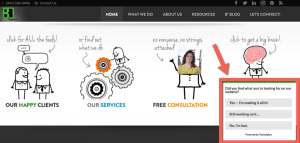If you’re looking to improve employee engagement and encourage a culture of happy workers, then try tracking and analyzing your employees’ data. When executed properly, data analysis can be helpful and responsible, not risky.
As Peter Drucker famously noted, “What gets measured gets managed.” Corporations that measure markers of employee satisfaction aim for long-term business success. Some employees may see this as being tracked, micromanaged, and surveilled, but it makes sense to gauge the morale and productivity levels of the people who represent the company.
If measured, employee behaviors, attitudes, and decisions can help employers enhance working experiences. Some employees realize this, which is why 90% of participants in a Harvard Business Review study said they felt comfortable allowing their company to collect data as long as they got something in return.
Improving Employee Engagement by Studying Data
Companies that analyze performance data can maximize engagement — a boon for both the employee and the employer. Gallup research shows that organizations with engaged workers see higher profits, improved efficiency, and increased growth. These businesses also churn fewer workers each year and save tens to hundreds of thousands of dollars annually per position. At the same time, employees report improved health and contentment.
How can companies achieve this and help employees without crossing any boundaries? The answer lies in carefully gathering specific data points via technology. Surveys, in particular, can be a rich source of noninvasive data. Not only do surveys allow workers to speak their minds, but they also give leadership the opportunity to take action on what the surveys elicit. A survey can ferret out the elements that make a job feel more like a chore and less like a second home.
Surveys can even subtly push toxic team members out the door by making respondents conscious of their own unhappiness. Yes, it’s costly to lose a high performer, but losing a negative Nelly isn’t such a bad thing. As Jay Goltz said, “The secret to having happy employees is to fire the unhappy ones.” Sure, in the Glassdoor era, letting folks go could backfire. However, creating an environment where unhappy workers decide to walk can be a blessing.
Making Sure Everyone Wants to Be on the Team
Disengaged employees call in sick 37% more often and are 18% less productive than their happier colleagues, according to a Gallup report. In order to pinpoint unsatisfied workers, human resources departments should cull internal information and examine which workers have the highest absentee rates or make the most performance errors quarter after quarter.
Don’t worry: This doesn’t make the personnel department Big Brother. Examining the data simply allows the department to intervene and foster changes. After all, disengaged workers may not necessarily want to leave the flock. If they can be pulled back in, then the company can save money and the employees can enjoy newfound satisfaction.
Disengaged workers may even be open to a more gracious and transparent end to their employer-employee relationship. Amazon goes so far as to incentivize disengaged workers to take another position. The company gives up to $ 5,000 to anyone who wants to leave at or above a certain hierarchical level. By accepting the money, the person forfeits his right to work for Amazon again. Companies can ensure that employees are committed by offering a quitting incentive, even if it’s not a monetary bonus.
Ethically Using Data to Build a Happier Workforce
Beyond surveys, businesses can track other indicators of employee productivity and performance. Some possibilities include reviewing how much time it takes to complete tasks or asking for feedback after an event. Leadership just needs to tread cautiously to avoid stepping into privacy problems.
At JPMorgan Chase & Co., executives from the legal, human sources, and risk management departments work hand in hand to ensure that all data collection is executed responsibly and purposefully. Similarly, Florida Hospital Celebration Health only monitors nurses’ movements to help their employees improve efficiency, not to find reasons to discipline personnel.
Of course, collecting data is one thing. Knowing how to use it to boost employee engagement, however, is another. Below are three ways employers can make the most of the input they get.
1. Use a variety of surveys to determine what employees care about most.
Raw survey responses are inherently valuable, but the number of employees who participate can also drive corporatewide action. Scott Judd, the head of people analytics at Facebook, and other authors of a Harvard Business Review study recommend studying which types of surveys have the highest engagement. In their analyses, 95% of workers filled out the employee engagement survey, whereas only about half completed the benefits questionnaire. This revealed a workforce that prioritized happiness over perks, and executives could use that knowledge when adjusting policies in the future.
2. Keep track of write-in comments on audits.
Employees may be pleased with the opportunity to color outside the lines and voice their opinions, particularly on anonymous audits. Workers who hesitate to speak up in meetings or with their managers may pour their hearts out in a poll. They might also share concerns that could be secretly hurting employee engagement and morale. Leaders should be ready to reflect upon the feedback they receive, because it may hit close to home. With the help of constructive criticism, management should then elevate workers’ experiences accordingly.
3. Record who attends company events and how long they stay.
What happens if your annual picnic attracts only folks from upper management? Or if that two-hour holiday party for all your staff empties out within 30 minutes? These are signs of a disconnect between what employees need and what they get from leadership. An organization that ignores these red flags could lose great people. On the other hand, a company that identifies unbalanced event attendance as a problem and works with their talent to rectify the situation could improve employee loyalty and commitment.
Workers deserve to be heard, and leadership wants to feel a kinship with employees. With a little help from ethically sourced data, companies can ensure they give their talented performers the best on-the-job experiences possible without encroaching on anyone’s privacy. You already hold the proverbial keys to unlocking employee engagement, so it’s time to open the door to greater employee satisfaction.
Looking for more ways to improve your interactions with others at work and at home? Take the Talk SHIFT Assessment for simple, practical communication tips.
Business & Finance Articles on Business 2 Community
(27)




